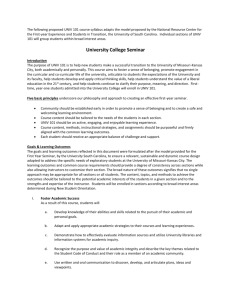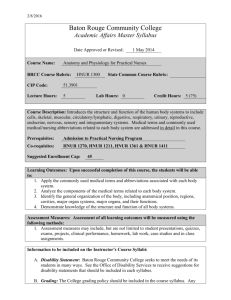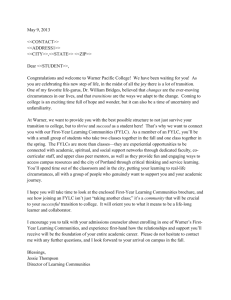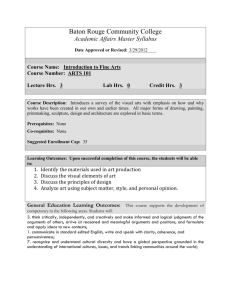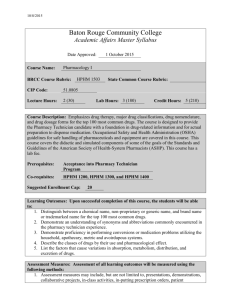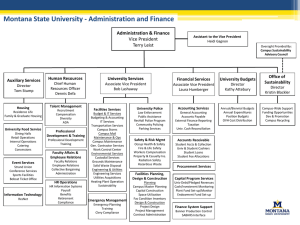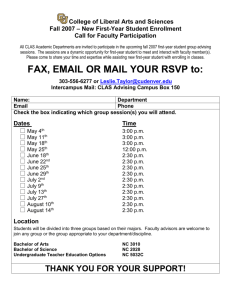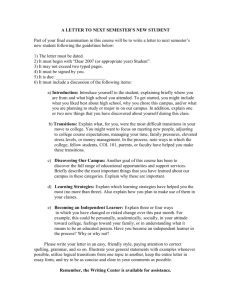First-Year Learning Community Syllabi Checklist
advertisement
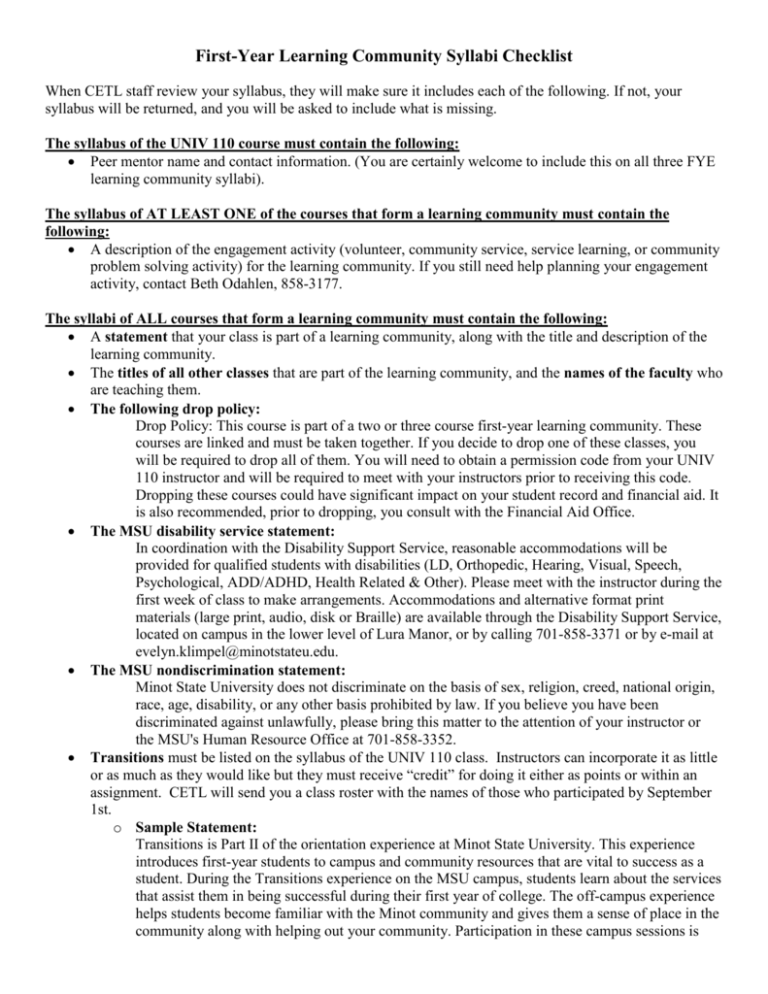
First-Year Learning Community Syllabi Checklist When CETL staff review your syllabus, they will make sure it includes each of the following. If not, your syllabus will be returned, and you will be asked to include what is missing. The syllabus of the UNIV 110 course must contain the following: Peer mentor name and contact information. (You are certainly welcome to include this on all three FYE learning community syllabi). The syllabus of AT LEAST ONE of the courses that form a learning community must contain the following: A description of the engagement activity (volunteer, community service, service learning, or community problem solving activity) for the learning community. If you still need help planning your engagement activity, contact Beth Odahlen, 858-3177. The syllabi of ALL courses that form a learning community must contain the following: A statement that your class is part of a learning community, along with the title and description of the learning community. The titles of all other classes that are part of the learning community, and the names of the faculty who are teaching them. The following drop policy: Drop Policy: This course is part of a two or three course first-year learning community. These courses are linked and must be taken together. If you decide to drop one of these classes, you will be required to drop all of them. You will need to obtain a permission code from your UNIV 110 instructor and will be required to meet with your instructors prior to receiving this code. Dropping these courses could have significant impact on your student record and financial aid. It is also recommended, prior to dropping, you consult with the Financial Aid Office. The MSU disability service statement: In coordination with the Disability Support Service, reasonable accommodations will be provided for qualified students with disabilities (LD, Orthopedic, Hearing, Visual, Speech, Psychological, ADD/ADHD, Health Related & Other). Please meet with the instructor during the first week of class to make arrangements. Accommodations and alternative format print materials (large print, audio, disk or Braille) are available through the Disability Support Service, located on campus in the lower level of Lura Manor, or by calling 701-858-3371 or by e-mail at evelyn.klimpel@minotstateu.edu. The MSU nondiscrimination statement: Minot State University does not discriminate on the basis of sex, religion, creed, national origin, race, age, disability, or any other basis prohibited by law. If you believe you have been discriminated against unlawfully, please bring this matter to the attention of your instructor or the MSU's Human Resource Office at 701-858-3352. Transitions must be listed on the syllabus of the UNIV 110 class. Instructors can incorporate it as little or as much as they would like but they must receive “credit” for doing it either as points or within an assignment. CETL will send you a class roster with the names of those who participated by September 1st. o Sample Statement: Transitions is Part II of the orientation experience at Minot State University. This experience introduces first-year students to campus and community resources that are vital to success as a student. During the Transitions experience on the MSU campus, students learn about the services that assist them in being successful during their first year of college. The off-campus experience helps students become familiar with the Minot community and gives them a sense of place in the community along with helping out your community. Participation in these campus sessions is required and included in your UNIV 110 grade as ________________ [e.g., 2% of your participation grade]. Common reading information, if appropriate. If this reading must be purchased, provide information to indicate under which course the book has been ordered(so students know where to find it in the bookstore) . UNIV 110 Course Description UNIV 110 First-Year Seminar. 2-3 Hours. An academic course linked to two other courses to form a first-year experience learning community. The course should inspire and support the transition to university life and learning and provide opportunities to engage with the campus and larger community. Topics vary according to the theme of the learning community.
